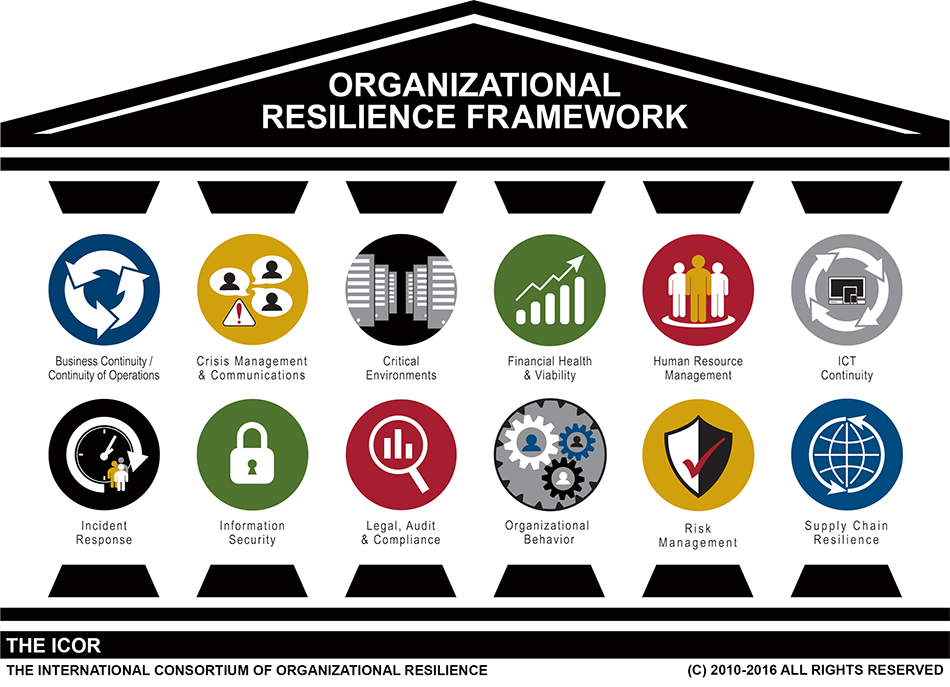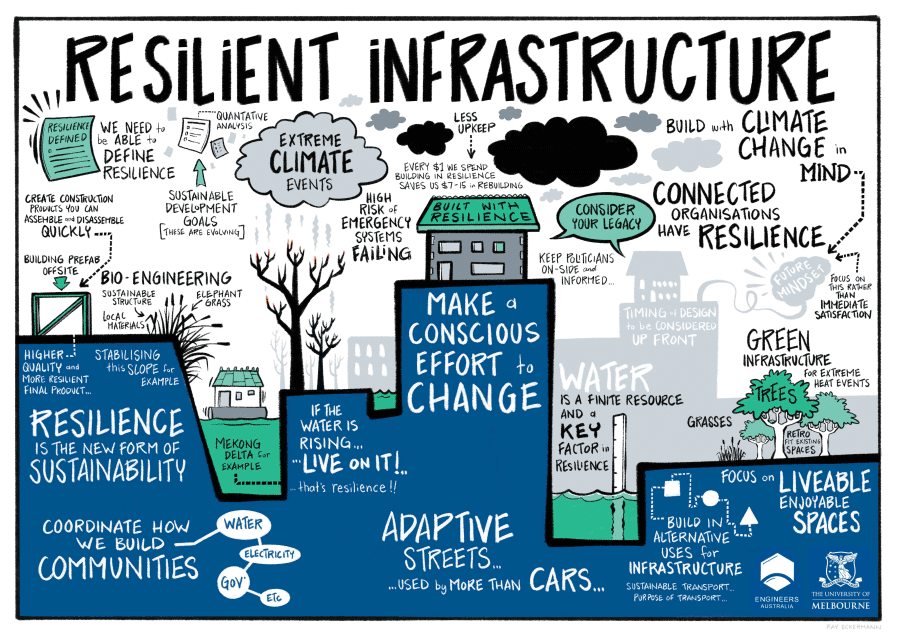Building Resilient Business Infrastructures Post-Crisis: A Guide to Long-Term Success
Embarking on the journey of Building Resilient Business Infrastructures Post-Crisis, this introductory paragraph aims to pique the interest of the readers with a blend of informative insights and engaging narrative flow.
Delving into the essence of what constitutes resilient infrastructures for businesses in the aftermath of a crisis, this discussion sheds light on the pivotal elements and strategies crucial for sustainable growth and adaptability.
Importance of Resilient Business Infrastructures
Building resilient business infrastructures is crucial post-crisis as it enables companies to adapt quickly to unexpected challenges and disruptions. A resilient infrastructure ensures that a business can continue to operate efficiently, protect its assets, and maintain customer confidence even in the face of adversity.
Examples of Businesses with Resilient Infrastructures
- Amazon: During the COVID-19 pandemic, Amazon's robust logistics and supply chain infrastructure allowed the company to meet increased demand and deliver essential goods to customers efficiently.
- Microsoft: By investing in cloud-based technologies and cybersecurity measures, Microsoft was able to seamlessly transition its workforce to remote work during the pandemic, ensuring business continuity.
- Walmart: Walmart's extensive network of stores and distribution centers enabled the company to quickly adapt its operations and implement safety measures to protect employees and customers during the crisis.
Long-Term Benefits of Investing in Resilient Infrastructures
Investing in resilient infrastructures offers long-term benefits for businesses, including:
- Increased operational efficiency and productivity
- Enhanced risk management and mitigation capabilities
- Improved customer trust and loyalty
- Ability to seize new opportunities and adapt to changing market conditions
Elements of Resilient Business Infrastructures

Resilient business infrastructures are composed of various key components that work together to ensure the organization can withstand and recover from crises effectively.
Key Components of Resilient Business Infrastructures
- Robust Communication Systems: Having reliable communication channels in place is essential for quick dissemination of information during a crisis.
- Redundant IT Systems: Backup systems and data storage solutions help prevent data loss and ensure continuity of operations.
- Supply Chain Resilience: Diversifying suppliers and establishing strong relationships can mitigate disruptions in the supply chain.
- Financial Stability: Maintaining a healthy financial position enables organizations to weather financial challenges that may arise during a crisis.
Role of Technology in Enhancing Resilience
Technology plays a crucial role in enhancing the resilience of business infrastructures by enabling remote work capabilities, automating processes, and ensuring data security. Utilizing cloud-based solutions, cybersecurity measures, and digital communication tools can help organizations adapt quickly to changing circumstances.
Flexible Organizational Structure for Resilience
A flexible organizational structure allows for quick decision-making, agile responses to changing conditions, and the ability to reallocate resources as needed. Cross-functional teams, decentralized decision-making authority, and clear communication channels are key elements of a flexible structure that contributes to resilience in times of crisis.
Strategies for Building Resilient Business Infrastructures

Building resilient business infrastructures post-crisis is crucial for long-term success and sustainability. Here is a step-by-step guide on how businesses can start building resilient infrastructures:
1. Conduct a Risk Assessment
- Identify potential risks and vulnerabilities that your business may face.
- Assess the impact of these risks on your operations, finances, and reputation.
- Prioritize risks based on likelihood and potential impact.
2. Develop a Resilience Plan
- Create a detailed plan outlining strategies to mitigate identified risks.
- Establish clear roles and responsibilities for implementing the plan.
- Include a communication strategy for internal and external stakeholders.
3. Invest in Technology and Infrastructure
- Upgrade technology systems to enhance data security and operational efficiency.
- Implement redundant systems to ensure business continuity in case of disruptions.
- Invest in infrastructure improvements to support remote work capabilities.
4. Build a Resilient Supply Chain
- Diversify suppliers to reduce dependency on a single source.
- Establish strong relationships with suppliers and maintain open communication channels.
- Create a contingency plan for supply chain disruptions.
5. Continuously Monitor and Adapt
- Regularly review and update your resilience plan based on changing circumstances.
- Conduct drills and simulations to test the effectiveness of your plan.
- Stay informed about emerging risks and trends in your industry.
Challenges and Solutions in Building Resilient Business Infrastructures
Building resilient business infrastructures comes with its own set of challenges that organizations need to address in order to ensure their long-term success. Here are some common challenges faced by businesses when trying to enhance their resilience, along with innovative solutions to overcome these obstacles.
Challenge: Lack of Resources
One of the main challenges organizations face is the lack of resources, both financial and human, to invest in building resilient infrastructures. Without adequate resources, businesses may struggle to implement necessary changes to enhance their resilience.
- Utilize cost-effective solutions: Organizations can explore cost-effective ways to enhance resilience, such as leveraging technology to streamline processes and reduce costs.
- Collaborate with partners: Building partnerships with other organizations or industry experts can help businesses share resources and knowledge to strengthen their infrastructures.
Challenge: Resistance to Change
Resistance to change within the organization can hinder efforts to build resilient infrastructures. Employees may be reluctant to adopt new practices or technologies, slowing down the process of enhancing resilience.
- Communicate the benefits: Providing clear communication about the benefits of resilience and involving employees in the decision-making process can help overcome resistance to change.
- Offer training and support: Investing in training programs and providing ongoing support can help employees adapt to new ways of working and embrace resilience initiatives.
Challenge: Cybersecurity Threats
Cybersecurity threats pose a significant challenge to building resilient business infrastructures, as data breaches and cyber attacks can disrupt operations and damage reputation.
- Implement robust cybersecurity measures: Organizations should invest in cybersecurity tools and technologies to protect their data and systems from potential threats.
- Regularly update security protocols: Continuous monitoring and updating of security protocols are essential to staying ahead of evolving cybersecurity threats.
Challenge: Supply Chain Disruptions
Supply chain disruptions, such as natural disasters or global pandemics, can have a significant impact on business operations and resilience.
- Diversify suppliers: Organizations can mitigate supply chain risks by diversifying their supplier base and establishing alternative sourcing options.
- Develop contingency plans: Creating contingency plans and conducting regular risk assessments can help organizations prepare for and respond effectively to supply chain disruptions.
Last Word
Concluding our exploration of Building Resilient Business Infrastructures Post-Crisis, it becomes evident that the ability to adapt and evolve in the face of challenges is a cornerstone of long-term success in the business landscape. By investing in resilience, businesses can not only weather storms but also thrive in the aftermath, paving the way for a prosperous future.
FAQ Corner
How can businesses benefit from investing in resilient infrastructures post-crisis?
Investing in resilient infrastructures post-crisis can help businesses bounce back quicker, reduce downtime, and enhance long-term sustainability.
What role does technology play in enhancing the resilience of business infrastructures?
Technology plays a crucial role in improving efficiency, communication, and adaptability within business infrastructures, thereby increasing resilience.
How can businesses integrate resilience planning into their operations effectively?
Businesses can integrate resilience planning by conducting risk assessments, implementing backup systems, and fostering a culture of adaptability and preparedness.


